The 1880 Federal Census of the United States was only the fourth U.S. census to include detailed information about the country’s inhabitants (until 1850 only basic information about head of household and number of inhabitants was collected). One of the pieces of information new to this census year was data about illness and disability.
In the columns next to the names of people listed on the census, headings were included that could be marked to record the person as blind, deaf and dumb, insane, idiotic, maimed, crippled, bedridden or otherwise disabled.
To expand on this information, and provide details about other groups such as homeless children and paupers, a supplement to the census was added called the 1880 Schedules of Defective, Dependent and Delinquent classes (also known as DDD). These schedules can tell you some very interesting things about your ancestors, as the amount of information included is quite extensive. Here’s how to find them and what to expect.
Please note that we are an affiliate partner of Ancestry and may earn a commission to support our work if you use their paid services after following a link on this page.
Where to Find the 1880 Census of Defective, Dependent, and Delinquent Classes
The only genealogy website that has a large, searchable collection of these schedules is Ancestry.com and their catalog shows that more than 300,000 records are contained within it.
Ancestry has digital images of these schedules for the following states.
- Alabama
- California
- Connecticut
- Georgia
- Illinois
- Iowa
- Kansas
- Maine
- Massachusetts
- Michigan
- Nebraska
- New Jersey
- New York
- Ohio
- Oregon
- Pennsylvania
- South Carolina
- Tennessee
- Texas
- Virginia
- Washington
There are seven schedules included in this supplemental census, titled as follows:
- Insane
- Idiots
- Deaf-Mute
- Blind
- Paupers or Indigent
- Homeless Children
- Prisoners
Some information from these schedules can be found on other sites, but it is limited to specific people or pages from the schedules that volunteers have transcribed.
You will need a paid subscription to access these records on Ancestry, but you can gather a fair amount of information by searching the database for free. If you don’t have an active subscription and don’t want to use a free trial, search for a name and then roll over it and Ancestry will provide some of the details about that record at no cost.
Of course, a good deal of additional information – including the original image – can be found when you can gain paid access, but this information can give you some clues to why your ancestor may have been included and help you decide if paying for access is worth it.
The people recorded in these schedules were also listed on the main U.S. Census for 1880 – known as Schedule 1. Records from this census can be found for free here.
Many supplemental schedule pages start with two columns that list the number of the page and the number of the line where the person was recorded in the main census. The first number shows the page from the enumeration district (this can be found on the top of the census page) and the second number is the line they are found on.
Here is an example. On the main 1880 U.S. Census (Schedule 1), Fred K Merten is listed as living in Woodstock, Illinois. He is 54 years old, a widower, and works in a grocery. The “blind” column is marked, so we can presume that Mr. Merten is also listed on the Defective, Dependent and Delinquent schedule for blind in McHenry County.
When we use the Ancestry search function to search the supplemental schedule, we find him on the Blind schedule for Woodstock.
You can see that the location where he can be found in the main Census is listed (Page 30, Line 16). Unfortunately, it doesn’t go both ways. If a person is listed in the 1880 Census as having a medical or mental impairment the exact location in the DDD schedules is not shared. You will have to search the Defective, Dependent and Delinquent schedules for your location of interest to find your ancestor.
The information here tells us that Mr. Merten was self-supporting and “semi-blind,” or visually impaired rather than totally blind. His cause of blindness is also recorded.
Each DDD schedule includes multiple columns that list demographic information, such as name and residence, as well as information specific to each schedule type. Listing all of these column headings in this article would be lengthy, but you can view clear PDF copies of each schedule courtesy of the National Archives at www.archives.gov. Go to the website and type in a search for the 1880 Supplemental Schedule of the Defective, Dependent and Delinquent Classes. The results will show a list of PDF files, one for every supplemental schedule.
Here is a closer look at each schedule and the information that can be found.
1880 Insane Schedule
This schedule lists everyone diagnosed with any kind of mental illness. It provides a large amount of information when filled in completely, including age of onset of mental illness, whether the person has been institutionalized, and whether or not the person must be locked up or restrained.
Diagnoses are written in 19th century terminology and include terms like Mania, Melancholia, and Dementia. The following screen shot shows an example from Cayuga County, New York main census. In the Town of Sennett, page 33, Sarah Benedict is recorded as being age 65. Her occupation is listed as Insanity and the Insane column is marked.
On the corresponding Insane schedule for Town of Sennett, Cayuga County, we find out much more information about Sarah Benedict. The schedule tells us that Sarah was from Cayuga County and had a diagnosis of Mania.
Her current attack had lasted for 21 years, was ongoing and she experienced her first attack at age 45. She was locked in a room at night but did not require restraints. She had been a patient in the Utica Insane Asylum for 4 years and was discharged in 1869.

You can find out more about researching your ancestors who may have lived in insane asylums by reading our article on Hospitals and Asylums.
1880 Idiot Schedule
The schedule for “idiots” included people who were diagnosed with intellectual or developmental disabilities. Certainly not a term we would use today. If you read the column headings, you can tell that many different diagnoses were recorded on this schedule, including any type of congenital condition, as well as epilepsy, traumatic brain injury, and stroke.
In this DDD example from Oak Point Precinct, Columbia County, Oregon, there are two males listed on the schedule for idiots.
If we go back to the main Census, we can find Walter Quigley, age 7, living with his family, and Wesley Merrill, age 35, living with his family on Deer Island.
The entries above on the schedule for Idiots are only partially filled in, which was not uncommon. But there is enough here that we can tell something about these two people. Walter Quigley’s condition began at birth. His head size is listed as natural, and his right side marked paralyzed, so possibly young Walter had cerebral palsy.
Wesley Merrill’s condition did not begin until he was 7 years old. Column 16 is marked, telling us that Wesley also had epilepsy, so Wesley’s condition was probably caused by a seizure disorder.
Schedule of Deaf-Mutes
This schedule was for people who were deaf, hearing impaired, and speech impaired. Even though the schedule is named Deaf-Mute, people who had partial impairments were also recorded.
In Boston, 12-year-old Mary E. Moriarty lived with her parents and attended deaf-mute school, according to Schedule 1. On the Deaf-Mute schedule, we can see that Mary lost her hearing at the age of 5 as the result of cerebral spinal meningitis. We can also see that Mary is marked as “semi-mute,” meaning that she did have some verbal speech, and that she had attended the Deaf-Mute Institute of Boston for 7 years.
Being that Mary lived in a large city, she was fortunate to have the opportunity to attend school. Many people with disabilities did not have this option in 1880.
Blind Schedule
Totally blind and visually impaired people, such as Fred Merten mentioned above, were listed on this schedule. This interesting example shows Lewis Wilson living in Providence, Pickens County, Alabama on the 1880 Schedule 1. He is shown as living with his wife, next door to his daughter and her family. The blind column is marked.
This Schedule 1 listing is a great example of how families handled living arrangements to care for elderly, disabled parents, as Lewis Wilson is recorded as being 100 years old. On the blind schedule, we can see that Mr. Wilson lost his sight at age 80 and that he was totally blind, or “stone” blind, as the census taker recorded it.
Even disabilities caused by old age were recorded on these supplemental schedules.
Paupers or Indigent
This Pauper or Indigent schedule lists all those who were unable to support themselves and did not receive support from family members. The schedule includes people who were living in public institutions for the poor, such as poor houses or poor farms, and people living in private residences but receiving support from the government.
Many people with disabilities lived in areas that did not have special hospitals or institutions, so they ended up living in “the county home,” as it was often called. Because of this, some people were recorded on more than one of the Defective, Dependent and Delinquent schedules.
Sarah Benedict mentioned above is an example of this, as she is recorded on both the Insane and Pauper or Indigent schedules. If you look at the screen shot showing Sarah Benedict as a resident of the Cayuga County Poor House, you can see that people with many different diagnoses ended up here. The list includes insanity, intemperance (alcoholism), sore eyes, feebleness of mind, old age, and even “sickness.”
Another example, Owen Shanley who lived in Woodstock, Illinois near Fred Merten mentioned above, is shown on the Pauper or Indigent schedule as living in a private home with support from the government.
His disability is listed as old age and the column headed “habitually intemperate” is marked yes, so we can conclude that Mr. Shanly’s situation was due to chronic alcoholism. (Even more interestingly, on the 1880 Schedule 1, Owen Shanly’s occupation appears to be listed as “anything for rum.”)
Homeless Children
The Homeless Children schedule was used to record children who had no parents and were housed in some sort of institution, usually a poor house or an orphanage.
The picture shown here provides an example of the problem that the census bureau had with the completion of these schedules, which was incomplete data. Many schedules on the 1880 Defective, Dependent and Delinquent supplemental census were filled out with just names or were filled out with only minimal information included. In some spots, there are notes to the census taker instructing him to go back to the area and fill out the information completely. It appears that the U.S. Census Bureau had trouble finding good help.
The Homeless Children schedule for Riverhead, Augusta, Virginia lists several children with just names included.
Mary Sheffey and Harriet Dodson appear at the bottom of this list. If we search these names on the 1880 Schedule 1, we find both girls in the Augusta County Poor House. Mary Sheffey, age 5, and Harriet Dodson, age 7, both have their race recorded as mulatto.
It is possible that these girls were the illegitimate children of mixed race parents, which was generally unacceptable in 1880 Virginia, so these children might have been abandoned to live in the poor house after their mothers died or, if their mothers could not support them financially.
Prisoners
The last schedule records prisoners in any kind of prison facility, including state penitentiaries, county or city jails, work houses, and police lock-up facilities. The schedule collected information about length of imprisonment, offense, and other fines or punishments, such as hard labor or future execution. In this example, Hector Moran is shown as imprisoned in a Cincinnati, Ohio city work house.
The schedule shows that Mr. Moran was serving a 60-day prison sentence that began on May 24, 1880. His crime is listed as drunk and disorderly. Another example shows the inhabitants of the Oliver Street Station lock-up, called Slatun (?) House, also in Cincinnati.
The crimes these men were imprisoned for include assault and battery, drunkenness, attempted rape, and disorderly conduct. Two prisoners were listed as “safe keeping,” meaning that they were being held in protective custody.
To discover more about your criminal ancestors, read this article.
Given the number of people recorded, there is a solid chance that you may find your ancestors in these schedules. The examples shown here give you an idea of what you can learn – but the amount of information available is dependent on the thoroughness of the individual census taker for your ancestor’s town.
Remember that you can take advantage of an Ancestry free trial if you don’t have a current subscription.
Good luck and happy researching!
You might also like to read: The Ultimate Quick Reference Guide to the U.S. Census for Genealogy
By Barb Bauer. Barb is a biologist and freelance researcher and writer living in Michigan. She uses the investigative and critical thinking skills she honed in graduate school to research her family history and help others understand their past. Among her genealogical activities are fulfilling photo requests on FindaGrave.com, researching her family’s roots using their Ancestry DNA test results, and learning to decipher raw DNA analyses on GEDmatch.com. Barb’s other interests include vintage photography (she’s been a collector for over 20 years), cemeteries, science, antiques, cats, gardening, and backpacking. You can learn more about Barb and the freelance writing services she offers by visiting her website.
Image: Woman in Hospital, 1920. Library of Congress
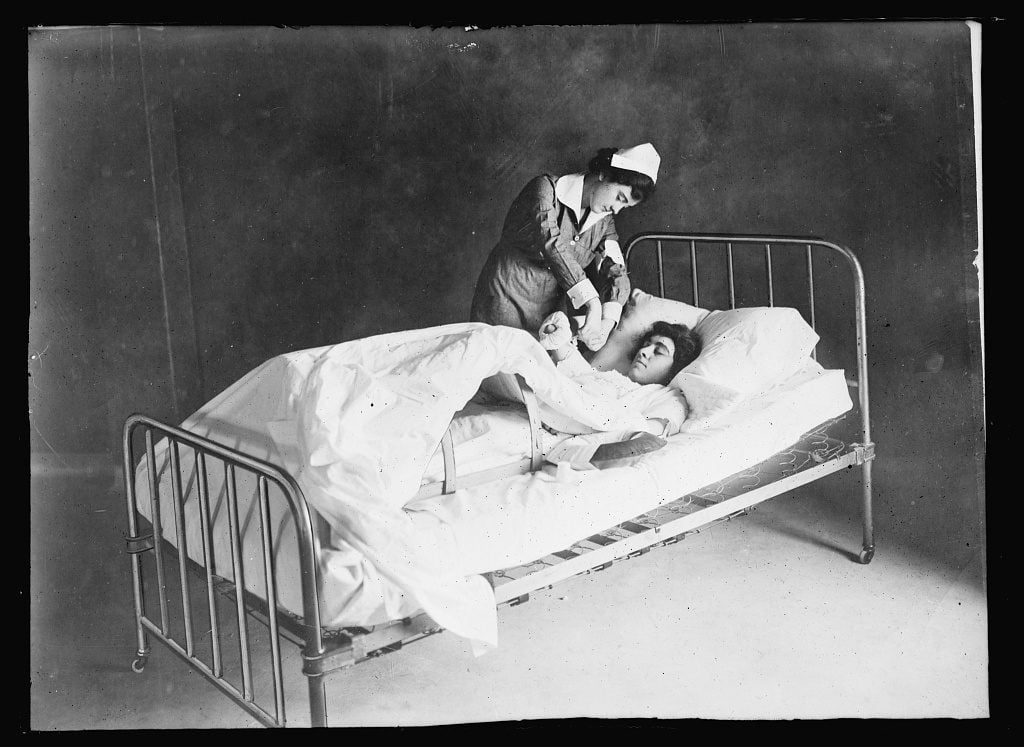

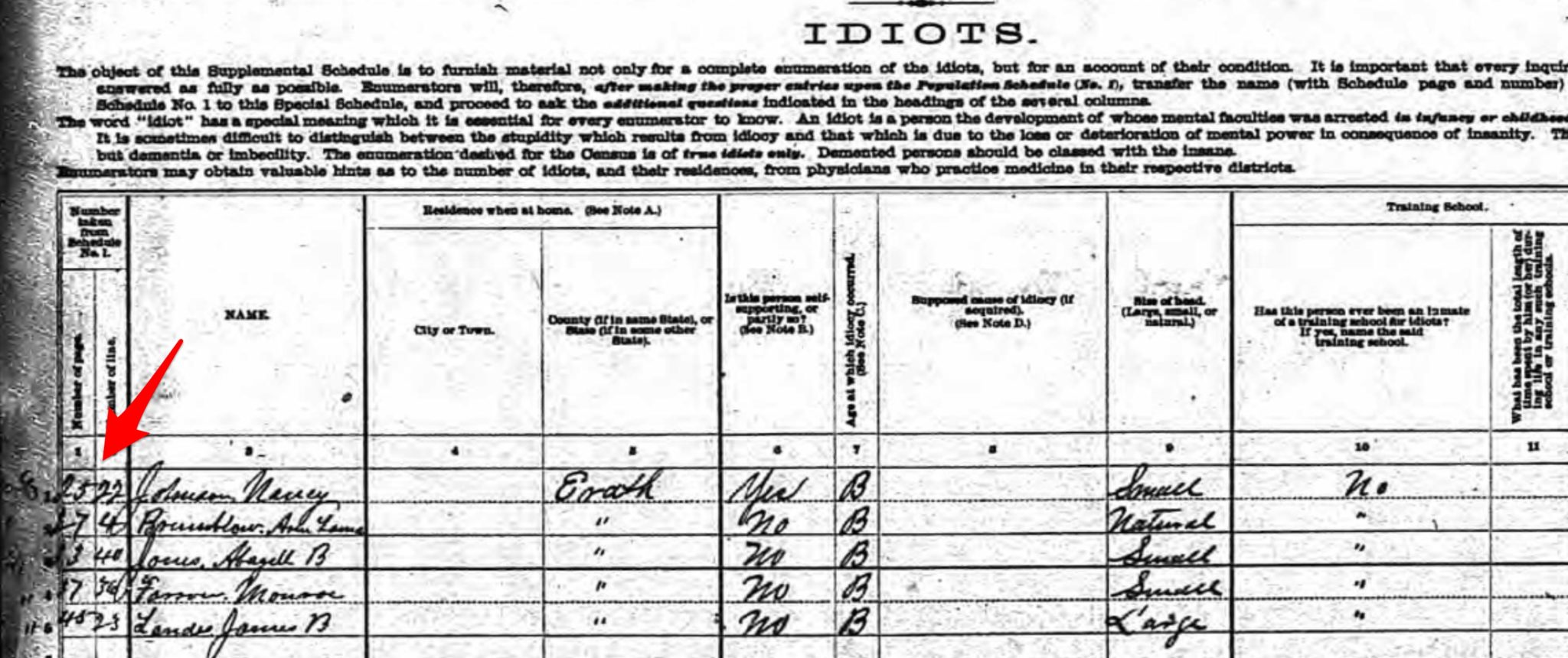
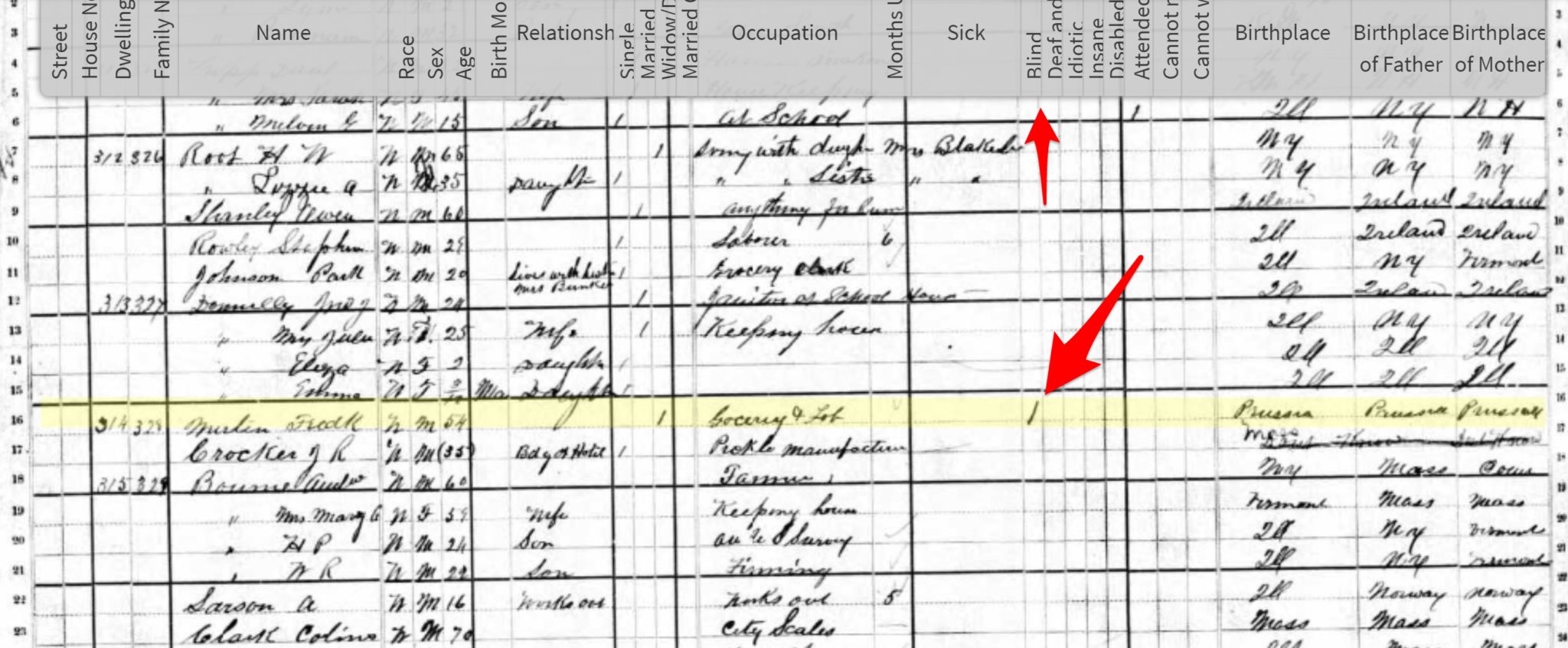


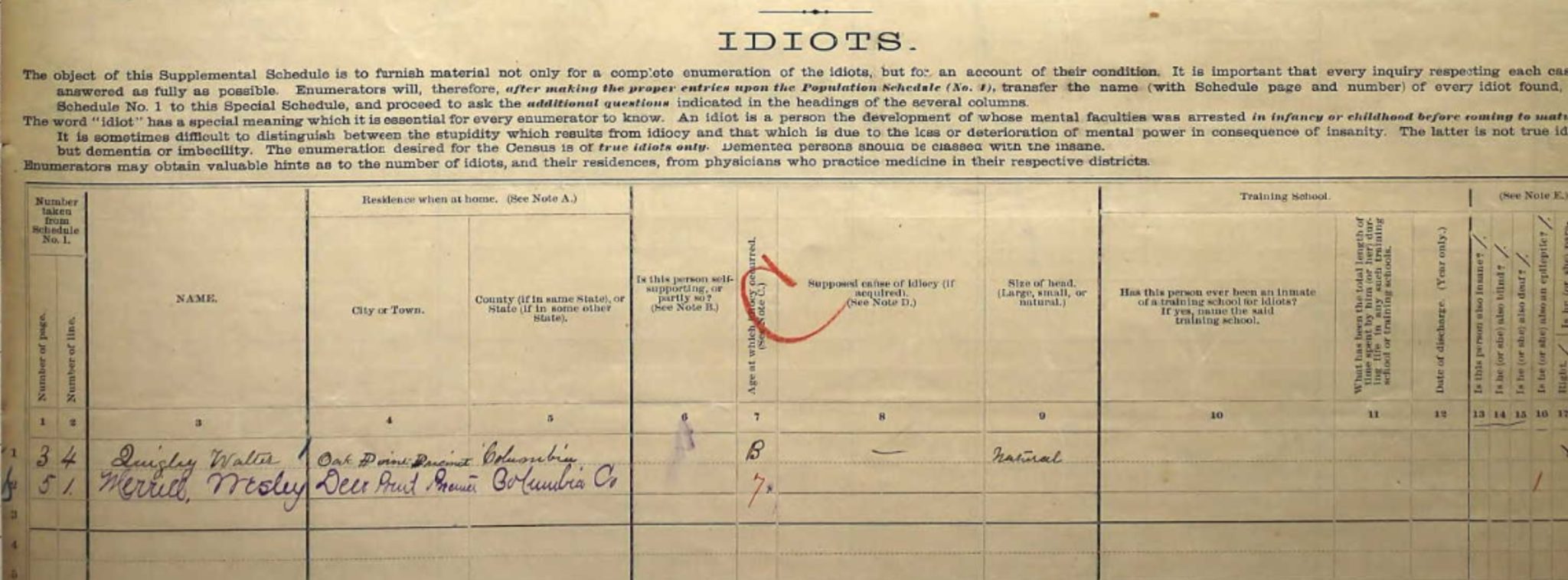
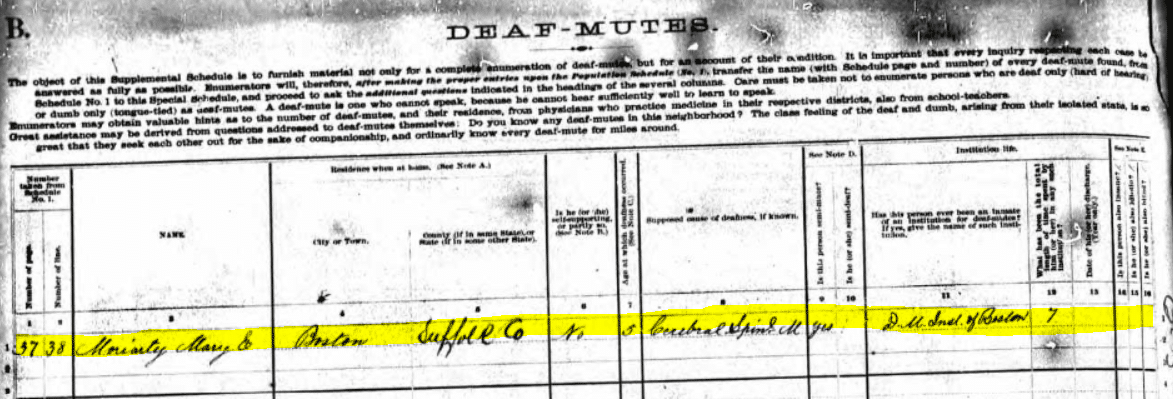




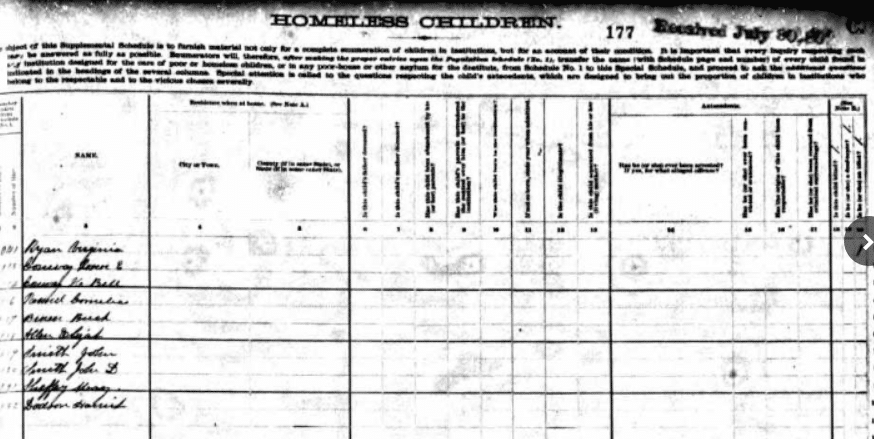

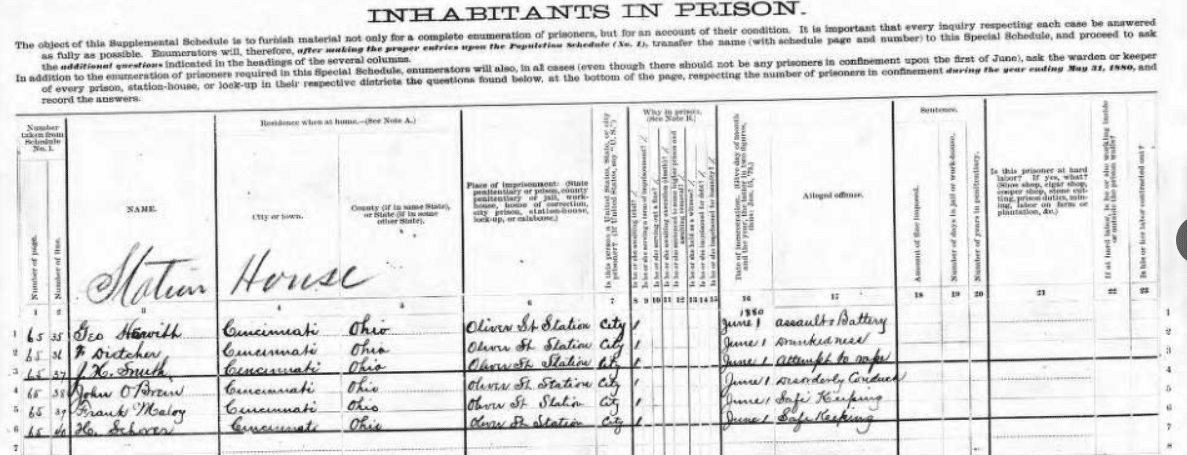
Good morning. I’m looking for Matilda Crawley born in Virgina but in 1880 June 1 Victoria Texas she is apparently on the schedule. Can you send me her information and schedule please. I believe she was born 1835. She’s the only one from that area with the name Matilda in Victoria Tx.
Looking for information on my ancestor described as “insane” on 1860 and 1870 census. By 1880 he is a patient at Weston State Hospital in Lewis County, West Virginia. I have written there some years ago and was told I’d need a court order to discover any records. Any ideas.. Kathy Stroope Veasey